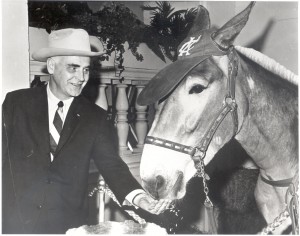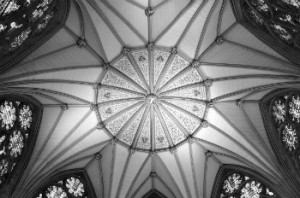Someone recently asked me about the title of this weblog. What does “All Books are Neighbors” mean anyway? It sounds like an adage, but as far as I can tell there is nothing like it anywhere in Erasmus’ venerable collection (At some time I hope to expand on Erasmus’ first–and perhaps my favorite–adage: “Friends have all things in common”). And while at this time a Google search of the phrase will unearth few results, it cannot be attributed to me. I was having coffee with a friend early one morning at the Black Cow when a friend uttered those four words.  At first I thought I had misheard because a barista let forth a piercing jet of steam at the same time, so I asked him to repeat himself. He said, “All books are neighbors.” He had never heard the saying before either, but had recently heard a speaker use it.
At first I thought I had misheard because a barista let forth a piercing jet of steam at the same time, so I asked him to repeat himself. He said, “All books are neighbors.” He had never heard the saying before either, but had recently heard a speaker use it.
Since the speaker was the first person to use it as far as I knew, I suppose the context of the speech would be helpful in giving context to what I am no doubt sure by now my reader recognizes as an ambiguous phrase. The context was that the convention of language means that one can find common ground shared by any two or more books: assumptions, understandings of the audience, and meaningfulness. Marx and Smith, King and Christie, Calvin and Kerouac, in print all these very different authors are neighbors and they engage in a dialogue that only makes sense if there is commonality. The commonality is so commonplace that readers don’t give a fig about their common assumptions and move their attention to the margins of dissonance. Now when I heard this I had to think through whether this was true or not, but I decided I didn’t give a fig either. Nor was I convinced that this was the best original context. The adage was so elegant, but the context was, well, oddly strained. It violated Occam’s Razor and all other sharp instruments of critical analysis. So I don’t think it can mean all books are neighbors to each other.
While books are our favorite artifacts of human existence (aren’t they?), they do not literally breathe or have the capacity ot relationship. Books are personified in relationship to the real beings who create them. I prefer to understand the adage to mean that we cherish the written word both to know we are not alone and that we have access to the artifact that, as the product of human creativity, reminds, amuses, entertains, angers–in short inspires us to be human.
I have thus admitted that I adopted (stole?) this adage and invested my own meaning to it as wantonly as any petty proof texter. But let us dialogue. What do you think it means? Please comment. I promise that most future posts will contain more story than dialectic.
Assuming we accept my meaning of the adage then, I chose it for this blog to suggest that books, stories, and reading will be the focus of my writing. I am using it to inspire my ideal of wanting to be more consistent with my blog as an expression of art (kitsch?) and not as a cash cow, and to share my thoughts and receive feedback from my friends who are willing to take time to read. I hope they entertain and inspire any who take up and read. That last allusion is to St. Augustine of Hippo, so you see all books are neighbors!



